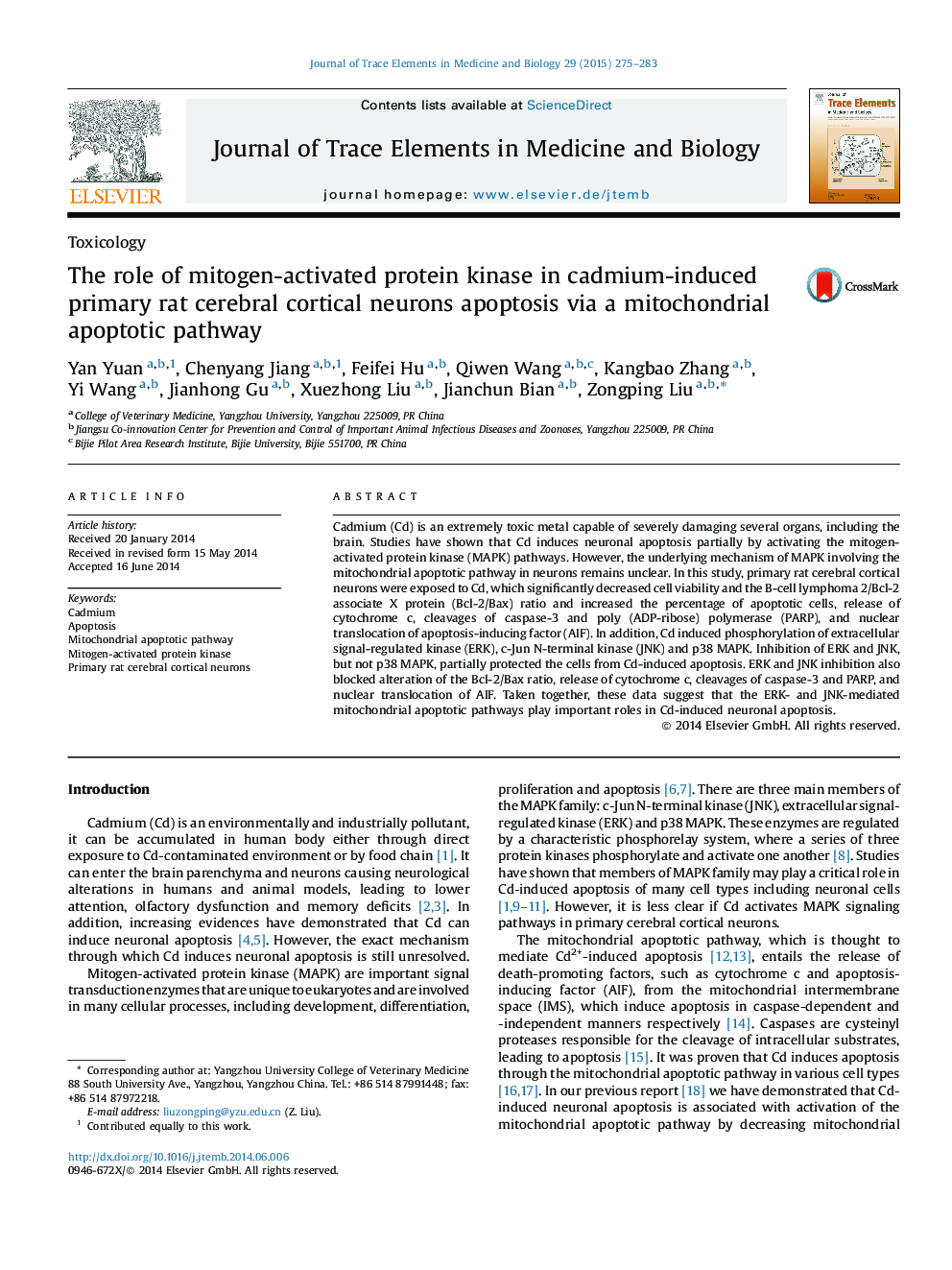| کد مقاله | کد نشریه | سال انتشار | مقاله انگلیسی | نسخه تمام متن |
|---|---|---|---|---|
| 1227373 | 1645361 | 2015 | 9 صفحه PDF | دانلود رایگان |
Cadmium (Cd) is an extremely toxic metal capable of severely damaging several organs, including the brain. Studies have shown that Cd induces neuronal apoptosis partially by activating the mitogen-activated protein kinase (MAPK) pathways. However, the underlying mechanism of MAPK involving the mitochondrial apoptotic pathway in neurons remains unclear. In this study, primary rat cerebral cortical neurons were exposed to Cd, which significantly decreased cell viability and the B-cell lymphoma 2/Bcl-2 associate X protein (Bcl-2/Bax) ratio and increased the percentage of apoptotic cells, release of cytochrome c, cleavages of caspase-3 and poly (ADP-ribose) polymerase (PARP), and nuclear translocation of apoptosis-inducing factor (AIF). In addition, Cd induced phosphorylation of extracellular signal-regulated kinase (ERK), c-Jun N-terminal kinase (JNK) and p38 MAPK. Inhibition of ERK and JNK, but not p38 MAPK, partially protected the cells from Cd-induced apoptosis. ERK and JNK inhibition also blocked alteration of the Bcl-2/Bax ratio, release of cytochrome c, cleavages of caspase-3 and PARP, and nuclear translocation of AIF. Taken together, these data suggest that the ERK- and JNK-mediated mitochondrial apoptotic pathways play important roles in Cd-induced neuronal apoptosis.
Journal: Journal of Trace Elements in Medicine and Biology - Volume 29, January 2015, Pages 275–283
